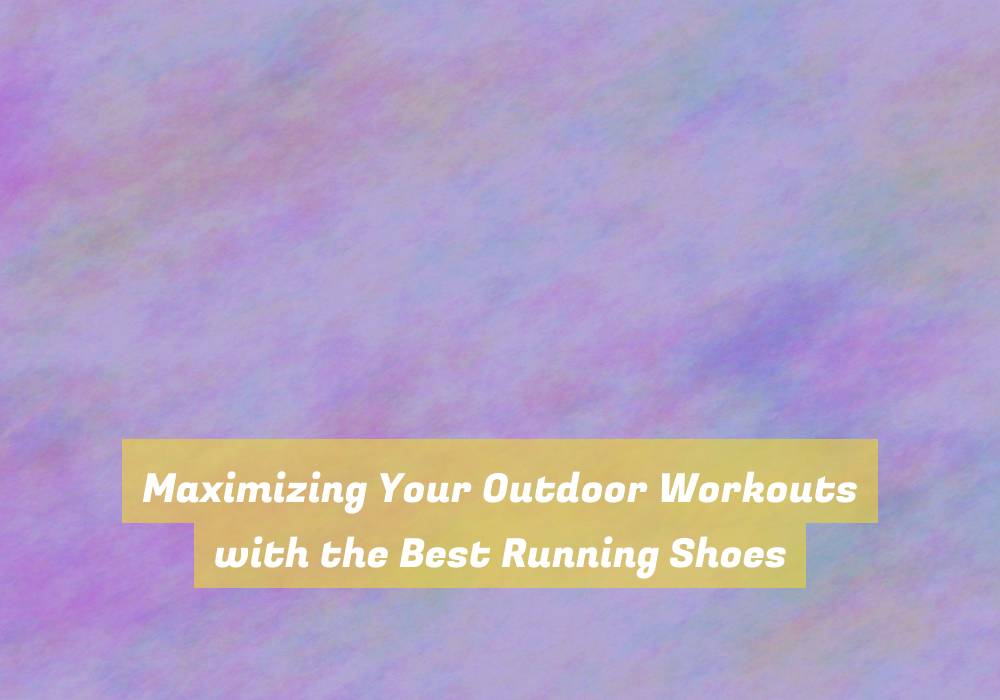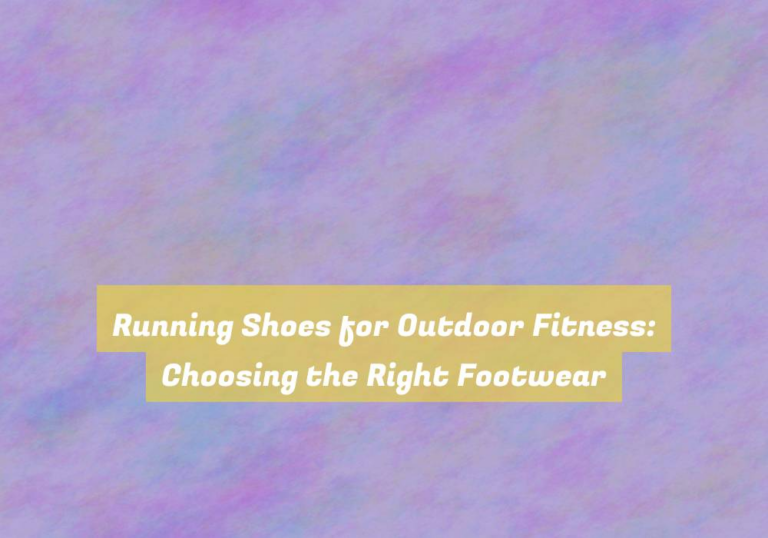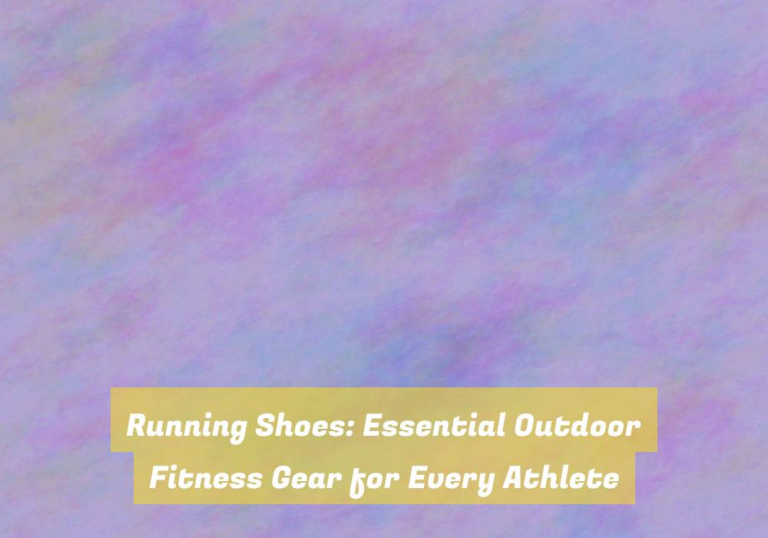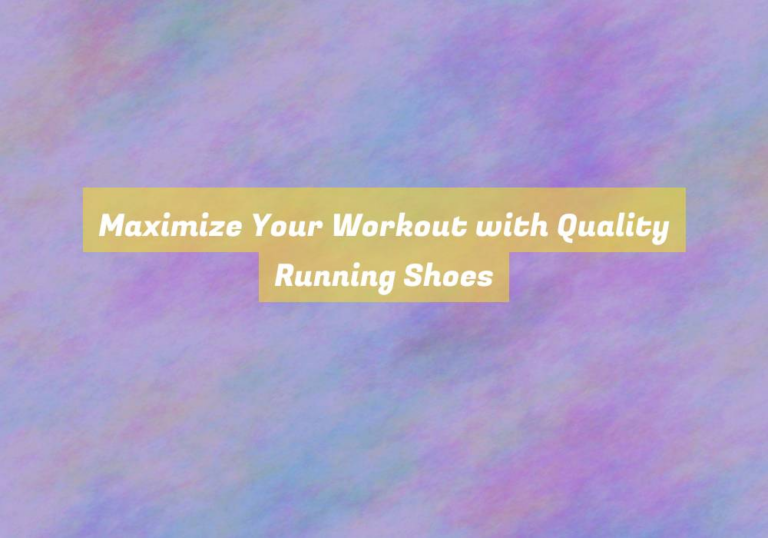Maximizing Your Outdoor Workouts with the Best Running Shoes
As you lace up your running shoes and step out into the fresh air, you want to ensure that every stride you take is supported and comfortable. Finding the best running shoes for your outdoor workouts can make a significant difference in your performance and overall experience.
Whether youG??re a beginner or a seasoned runner, the right pair of shoes can enhance your outdoor workouts in ways you may not have considered. So, how can you make sure youG??re maximizing your potential with the best running shoes?
Choosing the Right Shoe Type
When selecting the right shoe type for your outdoor workouts, consider the terrain and the specific activities youG??ll be engaging in.
For trail running or hiking on rugged terrain, opt for trail running shoes with aggressive tread patterns and durable soles to provide traction and stability. These shoes are designed to handle uneven surfaces and protect your feet from rocks, roots, and other obstacles.
If youG??re planning to do road running or walking on paved surfaces, look for cushioned running shoes that offer support and shock absorption to reduce impact on your joints.
For activities like cross-training, choose versatile athletic shoes that provide stability for lateral movements and support for various exercises.
Additionally, consider the weather conditions in your area and select shoes with appropriate ventilation and water resistance.
Understanding Cushioning and Support
To ensure proper support and cushioning for your outdoor workouts, itG??s essential to understand the role of these features in your running shoes.
Cushioning is crucial as it absorbs the impact of each stride, reducing stress on your joints and muscles. Look for shoes with ample cushioning in the midsole to provide a comfortable and protective feel during your runs.
Additionally, support is vital for maintaining stability and preventing injury. Arch support helps distribute the pressure evenly across your foot and can prevent overpronation or supination. A supportive heel counter also aids in maintaining proper alignment and stability.
When choosing running shoes, consider your individual needs. If you have a neutral gait, shoes with moderate cushioning and support may be suitable. For overpronation, seek shoes with added stability features. High-arched feet may benefit from shoes with extra cushioning.
Understanding the balance between cushioning and support is key to finding the best running shoes for your outdoor workouts.
Exploring Outsole and Traction
Understanding cushioning and support in running shoes is crucial, and now weG??ll explore the outsole and traction to further enhance your outdoor workouts.
The outsole of a running shoe is a critical component that directly impacts your performance and safety. Look for durable rubber outsoles with multidirectional tread patterns to provide excellent traction on various surfaces. These outsoles offer stability and grip, allowing you to tackle rugged terrains with confidence while minimizing the risk of slips and falls.
Additionally, consider the flexibility of the outsole, as it affects your footG??s natural movement and the shoeG??s overall comfort. A flexible outsole promotes a more efficient stride and reduces the likelihood of discomfort or injury during longer runs.
Furthermore, some running shoes feature specialized technologies like carbon rubber or high-abrasion rubber in specific areas of the outsole to enhance durability and traction where itG??s needed most.
Considering Fit and Comfort
For an optimal running experience, prioritize finding a shoe that fits comfortably and securely to support your outdoor workouts. The right fit is crucial in preventing blisters, discomfort, and potential injuries. When trying on running shoes, ensure thereG??s enough room in the toe box to wiggle your toes comfortably. Your heel should feel snug, with minimal slippage to prevent rubbing and blisters. Consider the width of the shoe as well, making sure it provides ample support without feeling too tight or constricting.
Additionally, pay attention to the arch support and cushioning. A well-cushioned shoe can absorb impact and reduce strain on your joints, enhancing your overall comfort during runs. ItG??s recommended to shop for running shoes later in the day when your feet are slightly swollen, mimicking the conditions of your feet during a workout.
Conclusion
So, if you want to maximize your outdoor workouts, make sure you choose the right type of running shoe for your needs.
Consider factors like cushioning, support, outsole traction, and overall fit and comfort.
By selecting the best running shoes for you, you can ensure that your outdoor workouts arenG??t only more enjoyable, but also more effective.
Happy running!







